Balanced Scorecard & Best BSC PowerPoint Templates
There are various strategic management and planning tools to keep projects on track and assess their progress. One such system is the balanced scorecard. To find out all about the balanced scorecard and get a list of the best BSC PowerPoint Templates and examples, see our detailed guide below.
What is the Balanced Scorecard?
The Balanced Scorecard or BSC is a system for strategic planning and management that is used by organizations to track the execution of activities. The balanced scorecard is used to communicate desired results, align work in accordance with those desired goals, as well as to prioritize and monitor projects and progress to achieve strategic targets.
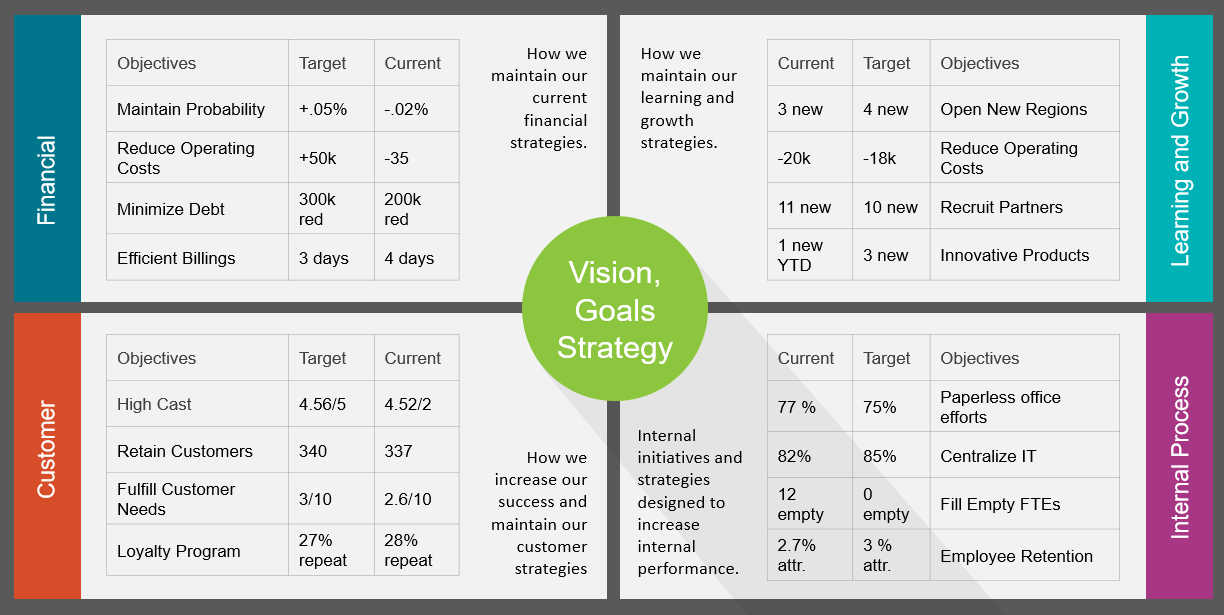
Source: Simple Balanced Scorecard for PowerPoint by SlideModel
History of Balanced Scorecard
As stated by Arthur M. Schneiderman, the first balanced scorecard was used in 1987 by a company named Analog Devices. The company produced semiconductors. The balanced scorecard evolved between 1986 to 1992. The first balanced scorecard used by the company was as a result of their five-year strategic planning process to cover the related Total Quality Management (TQM) activities. Arthur was the process owner for BSC and non-financial performance measurement. However, Robert Kaplan and David Norton are largely attributed as the creators of the balanced scorecard, which they introduced in a 1992 article for the Harvard Business Review.
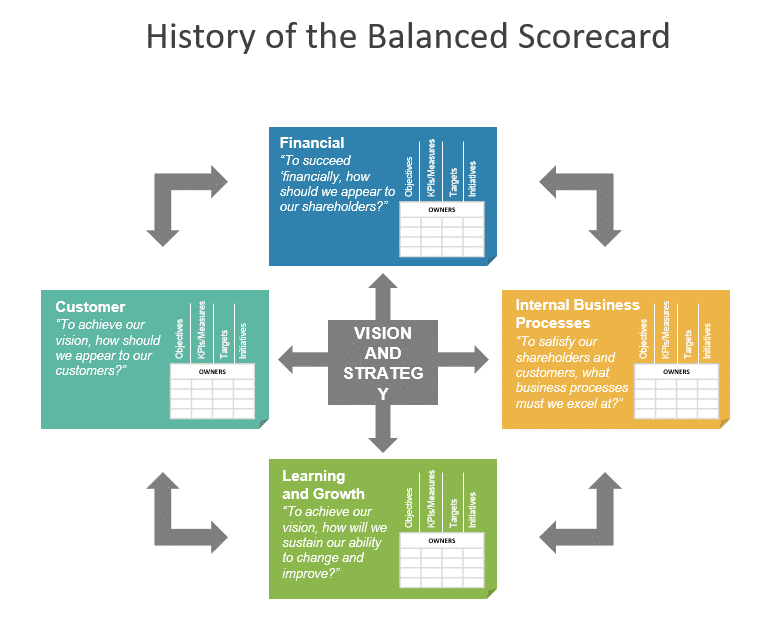
Source: Balanced Score Card template by SlideModel
Putting the Balanced Scorecard to Work – 4 Key Elements of the Balanced Scorecard
The key elements of the balanced scorecard enable an organization to implement strategy mapping, as well as track and manage strategic activities. There are four key elements of the balanced scorecard model.
1. Growth and Learning
The balanced scorecard is used for learning and growth analysis by looking at resources available for training and knowledge. This entails looking at how information is used by employees to achieve a competitive advantage.
2. Efficiency of Business Processes
Business processes are evaluated by analyzing efficiency of manufactured products and the operational management is reviewed to watch out for delays, gaps, bottlenecks, waste of resources, etc.
3. Analysis of Customer Satisfaction
Balanced scorecard is also used for checking the level of customer satisfaction in line with the price, availability and quality of the offered products or service.
4. Evaluation of Financial Performance
BSC is also useful for analyzing data related to sales, income and expenditures to evaluate financial performance.
Here is a short video that explains all the four key elements of the balanced scorecard in detail.
How do I make a Balanced Scorecard?
You can create a balanced scorecard by answering some basic questions regarding the vision of the organization, the four BSC perspectives, link these perspectives and then share and communicate your BSC.
1. The Vision
The first is to determine the vision of the company, as it is at the center of BSC. The vision and goals are the first step in making a balanced scorecard.
2. Four Perspectives
You can place the above mentioned four perspectives in diagrammatic form to create a BSC. These include; the capacity of the organization (growth and learning), processes (and their efficiency), customer satisfaction (or the lack of it) and financial data (to evaluate financial performance.
3. Link Perspectives
You can do this by linking the four perspectives using arrows. Define your goals and objectives, measures and targets along the way.
4. Communicate
Finally, communicate the balanced scorecard to outline the initiatives and actions for short-term actions and long-term strategic objectives.
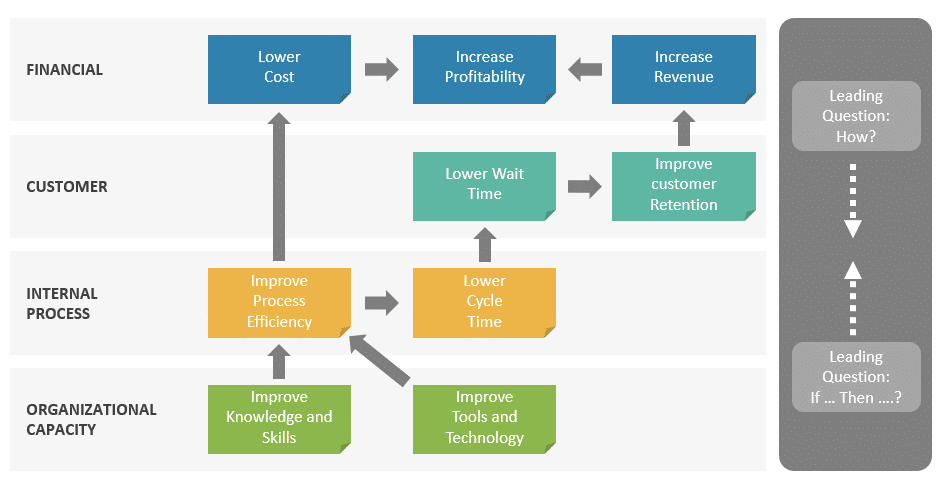
Balanced Scorecard PowerPoint Templates & Examples
If you find it confusing to create a balanced scorecard or wish to make it easier for yourself to create a BSC, you can use the following Balanced Scorecard PowerPoint Templates with visually appealing balanced scorecard slides templates and examples.
1. Flat Balanced Scorecard PowerPoint Template
This is a very good template for people looking to create a balanced scorecard. It provides various handy layouts for creating a BSC slide for strategy mapping and to highlight the key strategy of the organization. The template contains five highly customizable balanced scorecard layouts. This also includes slides for measuring objectives, targets, measures and initiatives.
Go to Download Flat Balanced Scorecard PowerPoint Template
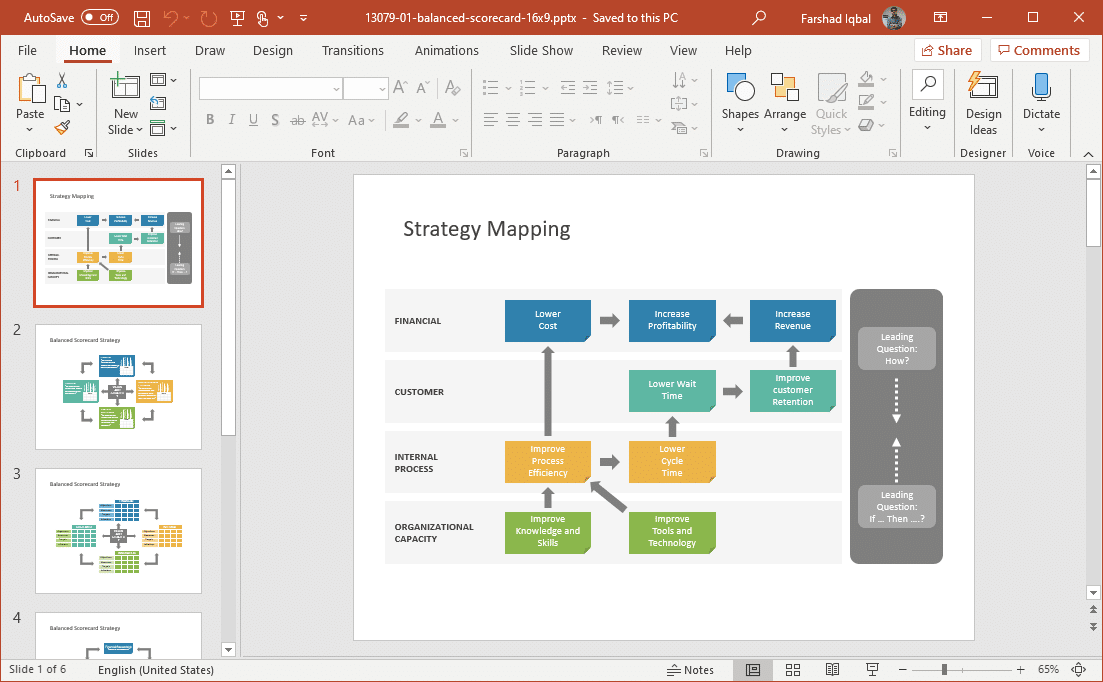
2. Simple Balanced Scorecard KPI PowerPoint Dashboard
This BSC PowerPoint Template depicts layouts with balance scorecards and four BSC elements. Using this template, Key Performance Indicators can be used for laying out the four key elements of the balanced scorecard to discuss the organization’s performance and strategy. What makes this template quite useful for making a balanced scorecard are the layouts which allow adding the objectives, targets and current standing of the organization with relevant icons to show progress.
Go to Download Simple Balanced Scorecard KPI PowerPoint Dashboard
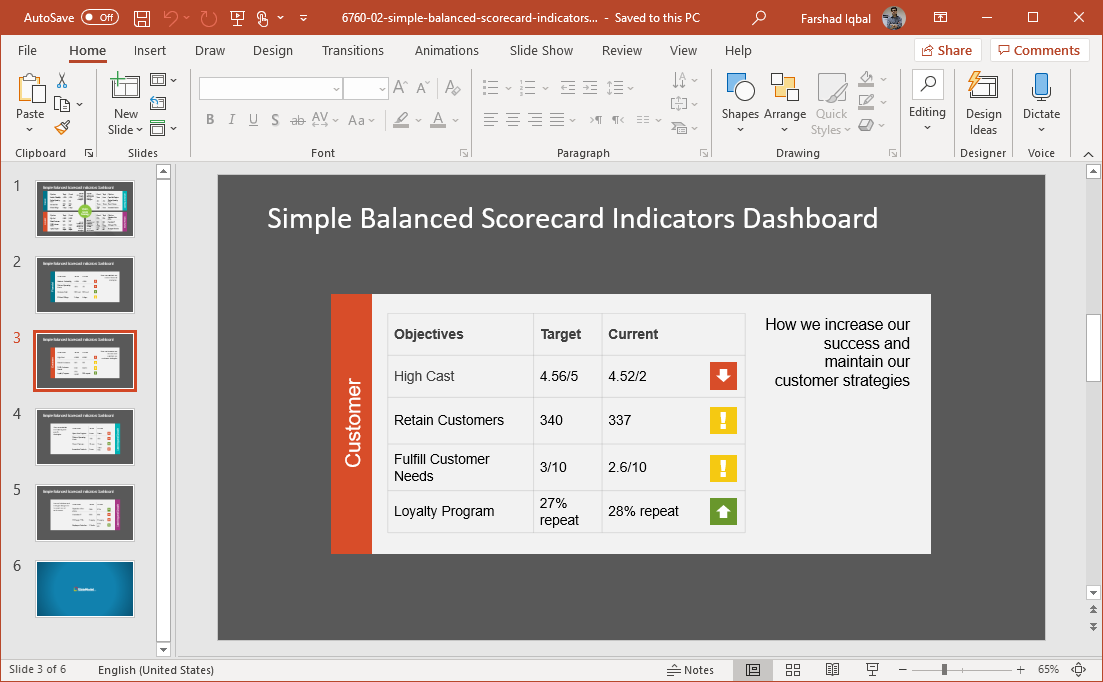
3. Balanced Scorecard Template for PowerPoint
This template provides larger BSC diagrams for you to edit and create a balanced scorecard with all major objectives, KPIs, targets and initiatives. Like other templates in this list, this template also attributes a color to all four of the key elements of a BSC.
Go to Download Balanced Scorecard Template for PowerPoint
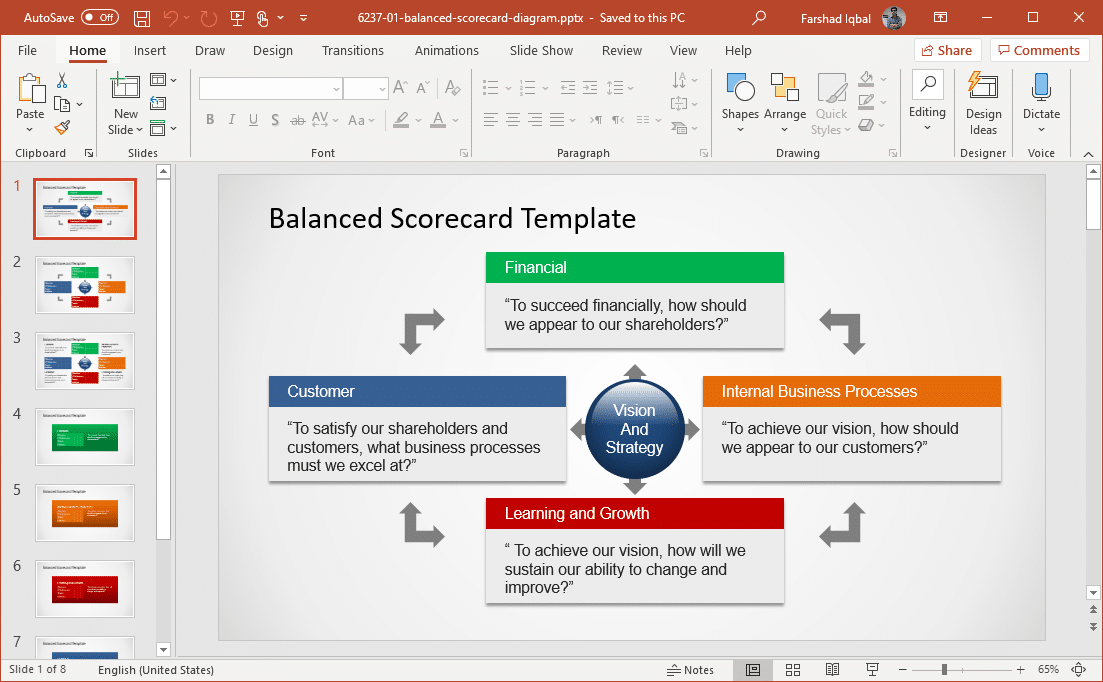
Alternatives to BSC
There are various other frameworks that can be deemed as a viable alternative to BSC. Some of these BSC alternatives are listed below.
OKR
OKR stands for Objectives and key results. This framework is used for defining and tracking of objectives and their related outcomes. OKR is largely a framework used for achieving outcome based success. While OKR can be considered as a BSC alternative, it is also believed that both can be used to complement each other.
SMART Goals
SMART outlines goals that are specific, measurable, achievable, relevant and time-based. SMART goals are widely used in project management and can serve as an alternative or complement BSC.
Six Sigma
This is a data-driven approach to improving quality by defining, measuring, analyzing, improving and controlling business processes. Six Sigma might include the DMAIC (Define, Measure, Analyze, Improve and Control) or DMADV (Define, Measure, Analyze, Define and Verify) methodology.

Final Words
Balanced scorecards are extensively used not only by businesses but also by government departments, military units and non-profit organizations. It is estimated that more than half of major companies in Europe, Asia and the United States use BSC. The use of the balanced scorecard is also rapidly increasing across Africa and the Middle East, indicating its utility. In fact, a study by Bain & Co has indicated that BSC is actually the fifth most used management tool in the world. A balanced scorecard can therefore be quite useful in analyzing the four key perspectives that affect an organization to use a disciplined framework for strategic planning and management.
